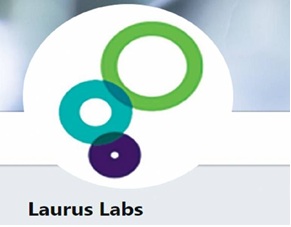Laurus Labs banking on vertical integration to crack anti-HIV tenders and US formulations mkts
The company has so far filed 24 abbreviated new drug applications (ANDAs) with US FDA. It has five final approvals, three tentative approvals and two have completed validations.

Laurus Labs, one of the world’s largest producer of anti-HIV and hepatitis-C bulk drugs, is striving to become a vertically integrated drug manufacturer, as it tries to win supply tenders in high competitive global tenders for antiretrovirals (ARVs) and gain toehold in US generics market.
The company is moving both downstream into formulations to improve margins, and upstream into intermediates to cut dependence on China, and ensure reliability of supplies.
Laurus is already seeing the change. The bulk drugs or active pharmaceutical ingredients that constituted about more than two-thirds of revenues for the Hyderabad-based company, have now dropped to 40 percent.
Laurus, which has been moving up the value chain into formulations, has invested around Rs 750-800 crore on developing products and building factories to meet the most stringent of regulatory expectations.
The drug maker has the capacity to produce 8 billion tablets, and is well-positioned to operate at peak capacity by June-end as it anticipates higher demand.
The company has so far filed 24 abbreviated new drug applications (ANDAs) with US FDA. It has five final approvals, three tentative approvals and two have completed validations.
Laurus filed for ARV products and have approvals for DLT (Dolutegravir, Lamivudine, Tenofovir), DTG (Dolutegravir)/TDF (Tenofovirdisoproxilfumarate), and ET (Emtricitabine/Tenofovir DF).
Laurus won tenders awarded by Global Fund, US President’s Emergency Plan for AIDS Relief (PEPFAR) and country-specific, driving this business from Rs 5.1 crore in 1QFY19 to Rs 300 crore in 3QFY20.
In an exclusive interview to Moneycontrol, SatyanarayanaChava, CEO of Laurus Labs, said the company will be chasing products where it has competitive edge like having vertical integration,scale, and ability to manage supply chain better.
Chava said he believes that there is enough room for Laurus to grow in the highly competitive market anti-HIV drugs market.
“The funding for HIV, malaria, tuberculosis prevention and treatment is around $20 billion, the spend on anti-HIV drugs wouldn’t be more than $2 billion, there isn’t much room to cut. Adding to the many emerging countries like South Africa, China, India and Thailand are funding their procurement,” Chava said.
Reducing Chinese dependence
With raw materials from China forming the backbone for the anti-HIV APIs, Laurus starting further backward integration by manufacturing intermediates.
The shortages and steep price hikes of Chinese raw materials in 2018 made Laurus to develop in house capabilities to manufacture intermediates, which it was depending on China until then.
“We are backward integrated to intermediates to counter regulatory and pricing challenges,” Chava said.
Nowadays regulators are inspecting the intermediate facilities. Chava says that the compliant ones have increased prices.
“The economies of scale that they have achieved on anti-HIV products have helped them to start manufacturing intermediates,” Chava said.
But Chava said that bringing down complete dependence on China for raw materials isn’t possible.
“At maximum we can reduce our dependence of up to 50 percent, even this can only be achieved for products where we have huge volumes,” Chava said.
Source: moneycontrol